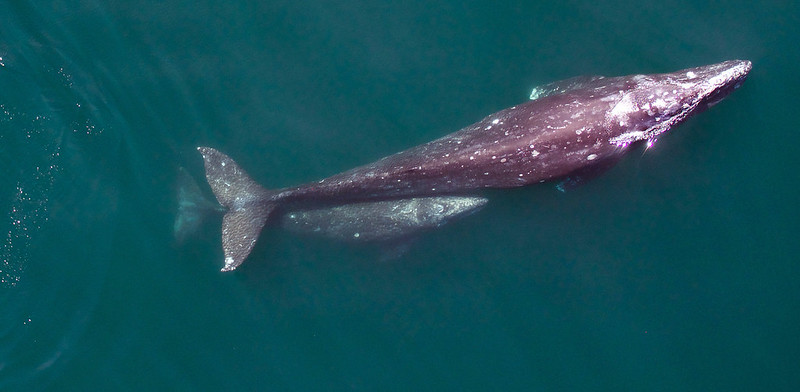Gray Whales (Eschrichtius robustus)
The “Ocean Travelers” of the North Pacific

(Photo by NOAA Fisheries West Coast on Flickr)
Off the coast of Tofino and Vancouver, a spectacular natural show unfolds every year—the migration of gray whales. These massive creatures glide slowly along the shoreline, as if whispering their ancient and mysterious tales with us.
🌎 The “Marathon Champions” of Migration
Gray whales make one of the longest migrations of any mammal on Earth! Every year, they travel over 16,000 km round-trip from freezing Alaska to warm Baja California in Mexico. That’s nearly halfway around the world! In spring and fall, you might spot them from the shores of Vancouver, spouting tall sprays of mist to say hello.
🌊The Playful Ocean Spirits
Despite their size, gray whales are surprisingly playful and love to show off! During their migration, it’s common to see them leap from the water and splash down (called “breaching”) or sometimes come close to boats. It feels like they’re inviting us to join their ocean party.
🦐The “Seafloor Vacuum Cleaner”
Gray whales feed by swimming on their sides along the ocean floor, sucking up sediment and filtering out tiny creatures with their baleen. It’s like watching a giant vacuum cleaner at work! When feeding, a cloud of “sediment” rises from the ocean floor, creating a spectacular scene. This messy eating style actually fertilizes the seafloor, nourishing the entire marine ecosystems.
💨The Ocean’s Jet Sprayers
When gray whales surface to breathe, they shoot noisy stream of air (known as “spout”) to 4 metres into the air. Each whale’s spray is shaped a little differently—almost like a fingerprint. Scientists can even tell them apart by their unique "heart-shaped" spouts.
🐋Moving Coral Reefs
Gray whales often carry barnacles and whale lice on their skin—tiny hitchhikers living rent-free. It makes their skin look like a coral reefs! These creatures can act like armor and even help in whale battles. Sometimes, whales rub against rocks to scrape off their “passengers.”
⚠Once Called “Devil Fish”
In the past, gray whales were overhunted that their populations dropped dangerously low. They were nicknamed “devil fish” for fighting back when harpooned. Thanks to conservation efforts, their populations have somewhat recovered today, although threats like ocean noise, pollution, and climate change still remain.
Next time you’re by the sea and spot a spray in the distance, wave to these incredible ocean travelers—and let’s help protect the ocean they call home.

